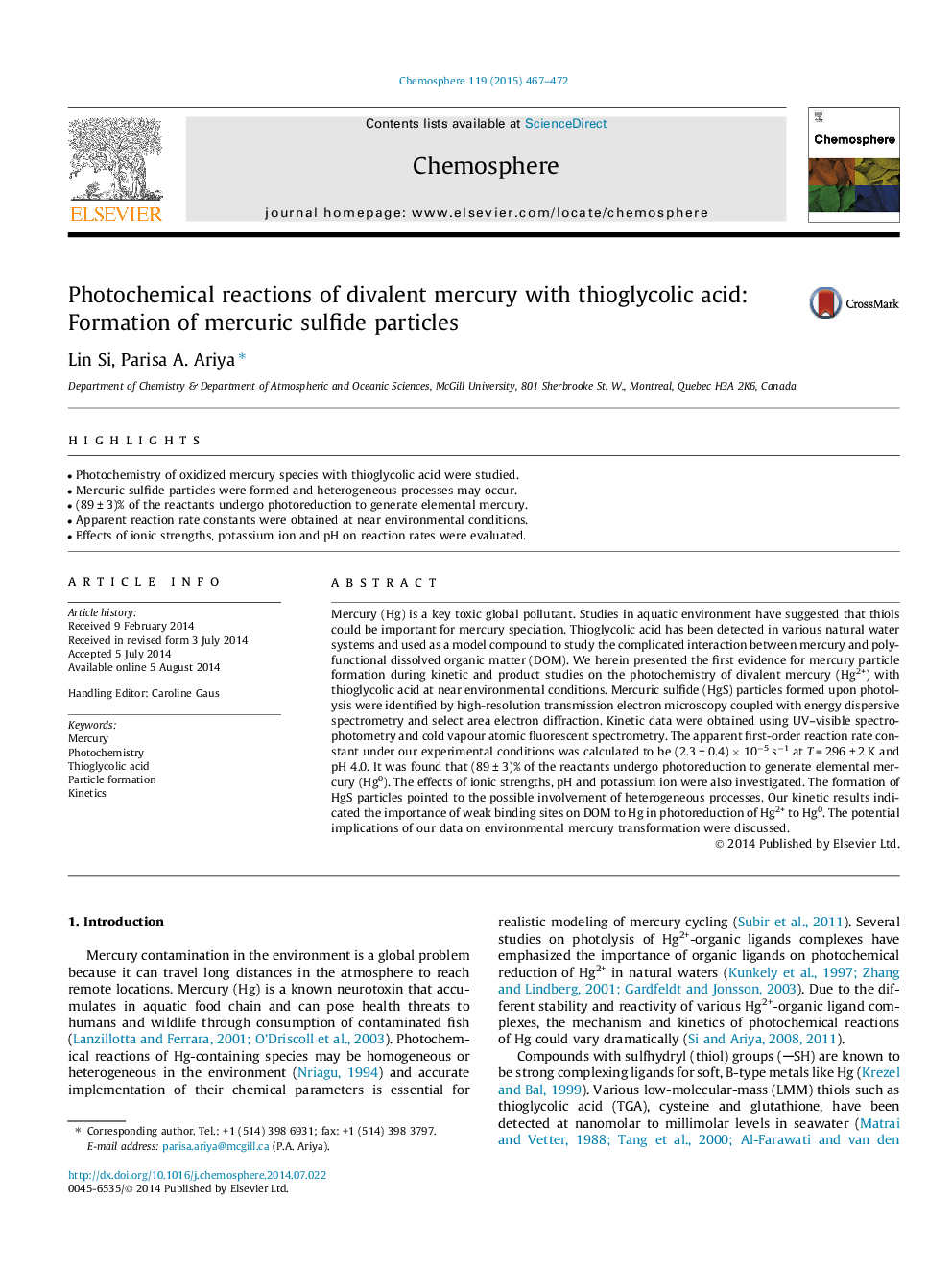| کد مقاله | کد نشریه | سال انتشار | مقاله انگلیسی | نسخه تمام متن |
|---|---|---|---|---|
| 4408656 | 1618852 | 2015 | 6 صفحه PDF | دانلود رایگان |
• Photochemistry of oxidized mercury species with thioglycolic acid were studied.
• Mercuric sulfide particles were formed and heterogeneous processes may occur.
• (89 ± 3)% of the reactants undergo photoreduction to generate elemental mercury.
• Apparent reaction rate constants were obtained at near environmental conditions.
• Effects of ionic strengths, potassium ion and pH on reaction rates were evaluated.
Mercury (Hg) is a key toxic global pollutant. Studies in aquatic environment have suggested that thiols could be important for mercury speciation. Thioglycolic acid has been detected in various natural water systems and used as a model compound to study the complicated interaction between mercury and polyfunctional dissolved organic matter (DOM). We herein presented the first evidence for mercury particle formation during kinetic and product studies on the photochemistry of divalent mercury (Hg2+) with thioglycolic acid at near environmental conditions. Mercuric sulfide (HgS) particles formed upon photolysis were identified by high-resolution transmission electron microscopy coupled with energy dispersive spectrometry and select area electron diffraction. Kinetic data were obtained using UV–visible spectrophotometry and cold vapour atomic fluorescent spectrometry. The apparent first-order reaction rate constant under our experimental conditions was calculated to be (2.3 ± 0.4) × 10−5 s−1 at T = 296 ± 2 K and pH 4.0. It was found that (89 ± 3)% of the reactants undergo photoreduction to generate elemental mercury (Hg0). The effects of ionic strengths, pH and potassium ion were also investigated. The formation of HgS particles pointed to the possible involvement of heterogeneous processes. Our kinetic results indicated the importance of weak binding sites on DOM to Hg in photoreduction of Hg2+ to Hg0. The potential implications of our data on environmental mercury transformation were discussed.
Journal: Chemosphere - Volume 119, January 2015, Pages 467–472
